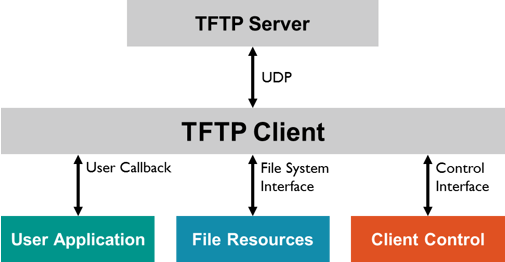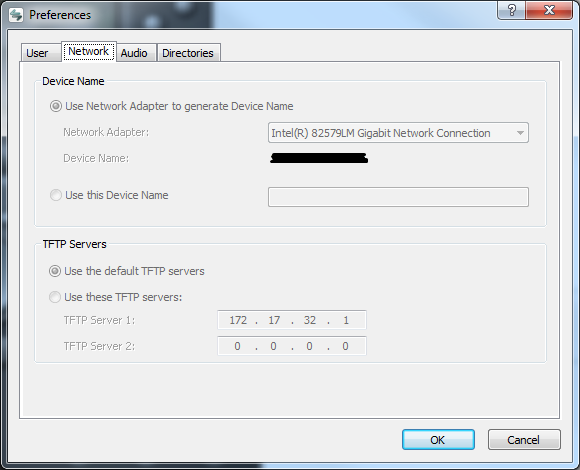
- #TFTP CLIENT NOT CONNECTING TO SERVER HOW TO#
- #TFTP CLIENT NOT CONNECTING TO SERVER DRIVER#
- #TFTP CLIENT NOT CONNECTING TO SERVER FULL#
- #TFTP CLIENT NOT CONNECTING TO SERVER PASSWORD#
The best way to guarantee that your windows firewall isn't blocking TFTP is to turn it off during your troubleshooting.Ĭontrol Panel -> Programs and Features -> Turn Windows Features on or off -> TFTP Client To test from windows, TFTP Client must be installed and the Firewall must allow TFTP Traffic. Try to get a file with Windows tftp -i x.x.x.x get undionly.kpxe Testing using Windows Getting from x.x.x.x:undionly.kpxe to undionly.kpxe Tftp -v x.x.x.x -m binary -c get undionly.kpxe Normally, you can use your Linux installation medium to live boot on another computer. This is ran from a separate Linux machine, NOT your FOG server. Testing TFTP Try to get a file with Linux Normally, the boot-files for FOG are located in /tftpboot Generally, TFTP offers these boot files.
#TFTP CLIENT NOT CONNECTING TO SERVER FULL#
TFTP is very simple and has very little protections in place Generally read-only is preferred for files offered by TFTP, however full permissions will work too. TFTP is used to download the boot-file specified by either DHCP or ProxyDHCP. 13.5.4 Ensure nothing else on the network is conflicting with the DHCP server.13.4 Could not boot: Connection timed out ().

#TFTP CLIENT NOT CONNECTING TO SERVER HOW TO#
You'll find instructions on how to create it in boot/README on CD1 or DVD. When booting a blade during a SuSE installation, the blade does not boot automatically and you are prompted to perform an interactive installation: Prompted to Insert Module Disks During PXE Boot (SUSE only) This avoids a known interaction issue between the i82557/i82558 10/100 Ethernet hardware and the Broadcom 5704. Note - The eth instance may be different depending on your hardware setup.
#TFTP CLIENT NOT CONNECTING TO SERVER DRIVER#
The PXE server may be using the eepro100 driver.ġ.Ĝheck if the PXE server is using the eepro100 driver by examining the /etc/nf file for a line equivalent to: Fails with an error message indicating that the signal 11 was received.Hangs after the OS requests an IP address from the PXE server.When PXE installing a blade, the installer does one of the following: Installer Hangs or Fails During PXE Boot Installation To unmount all file systems and enable the blade to reboot correctly, ensure that you press Enter at the final OK prompt during the PXE boot installation. When booting the blade from the disk for the first time, the blade runs fsck to fix filesystems. The BIOS is configured to boot from the network by default.Īt the SC prompt, use the bootmode reset_nvram sn command to reset the BIOS to boot from the disk by default. You must re-install the blade.Īfter successfully completing a PXE boot installation, the blade continues to boot from the network instead of the disk.

This problem may occur if the blade is removed or powered off during installation.

The PXE boot installation did not complete.

GRUB version 0.92 (634K lower / 522176K upper memory)
#TFTP CLIENT NOT CONNECTING TO SERVER PASSWORD#
Root Password Message After Installing the Linux Kernelĭuring a PXE boot installation, the following message appears after loading the Linux kernel: An exact match is necessary to ensure that module versioning does not cause the 5704 network driver ( suntg3) to fail to load. This occurs if the linux distribution installed on the PXE server does not exactly match the linux distribution against which the supplemental CD (supplied with the Linux blade) was built. If the NFS services are working normally and can be used from other machines on the network, it is likely that the PXE server has provided the wrong kernel to the blade. See the Sun Fire B1600 Chassis Administration Guide for information on installing the SSC. If you have only one switch and system controller (SSC) installed on the chassis, ensure that the SSC is installed in position 0. This problem may also occur if the blade is not correctly connected to the PXE server. If this path is not in the output, check your NFS setup and configuration. # showmount -e Export list for PXE-server : /tftp (everyone)


 0 kommentar(er)
0 kommentar(er)
